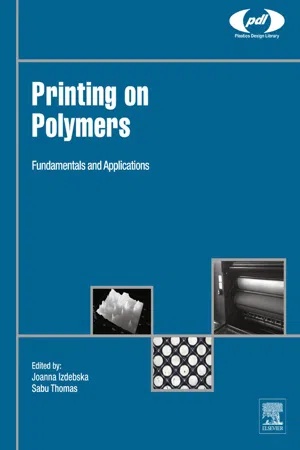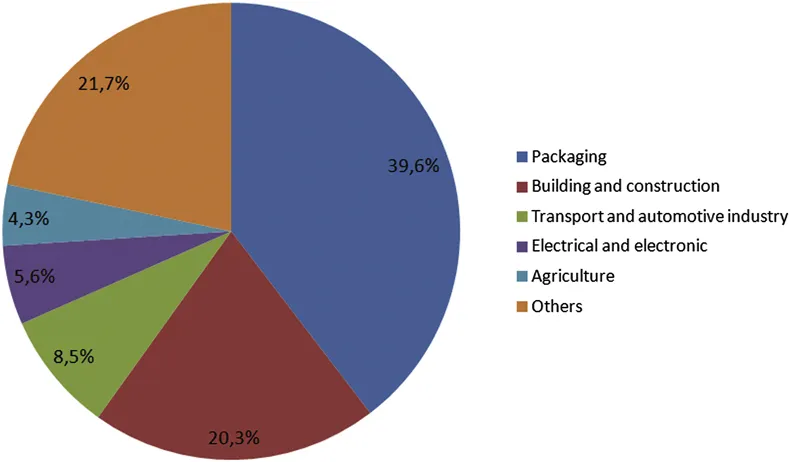
Printing on Polymers
Fundamentals and Applications
Joanna Izdebska-Podsiad?y,Sabu Thomas
- 444 pages
- English
- ePUB (mobile friendly)
- Available on iOS & Android
Printing on Polymers
Fundamentals and Applications
Joanna Izdebska-Podsiad?y,Sabu Thomas
About This Book
Printing on Polymers: Fundamentals and Applications is the first authoritative reference covering the most important developments in the field of printing on polymers, their composites, nanocomposites, and gels.
The book examines the current state-of-the-art and new challenges in the formulation of inks, surface activation of polymer surfaces, and various methods of printing. The book equips engineers and materials scientists with the tools required to select the correct method, assess the quality of the result, reduce costs, and keep up-to-date with regulations and environmental concerns.
Choosing the correct way of decorating a particular polymer is an important part of the production process. Although printing on polymeric substrates can have desired positive effects, there can be problems associated with various decorating techniques. Physical, chemical, and thermal interactions can cause problems, such as cracking, peeling, or dulling. Safety, environmental sustainability, and cost are also significant factors which need to be considered.
With contributions from leading researchers from industry, academia, and private research institutions, this book serves as a one-stop reference for this field—from print ink manufacture to polymer surface modification and characterization; and from printing methods to applications and end-of-life issues.
- Enables engineers to select the correct decoration method for each material and application, assess print quality, and reduce costs
- Increases familiarity with the terminology, tests, processes, techniques, and regulations of printing on plastic, which reduces the risk of adverse reactions, such as cracking, peeling, or dulling of the print
- Addresses the issues of environmental impact and cost when printing on polymeric substrates
- Features contributions from leading researchers from industry, academia, and private research institutions
Frequently asked questions
Information
Printing on Polymers
Theory and Practice
Abstract
Keywords
Plastic substrates; Print quality; Printability; Printed polymers; Printing techniques; Surface-free energy; Surface wetting1.1. Introduction—The Impact of Printing
